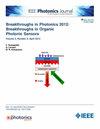基于强化学习的水下无线光通信自适应波束转向与发散控制
IF 2.1
4区 工程技术
Q3 ENGINEERING, ELECTRICAL & ELECTRONIC
引用次数: 0
摘要
水下光无线通信(UOWC)是一项有前途的技术,可实现5G/6G以上系统的高速、低延迟通信。然而,由于水下通道的复杂性,包括吸收、散射、湍流和动态海浪条件,使得静态分析复杂化,UOWC面临着重大挑战。为了解决这些挑战,我们提出了一种基于神经网络的UOWC系统波束自适应技术,结合深度q -网络(DQN)和长短期记忆(LSTM)模型。这些模型根据海浪的特性动态优化波束发散和转向角。我们的方法为在多样化和具有挑战性的水下环境中保持通信质量提供了一个强大的解决方案。在这项工作中,湍流使用指数广义伽马(EGG)分布进行建模,该分布为各种类型的湍流提供了很好的拟合。仿真结果表明,在多种水下环境下,基于lstm - dqn的方法始终优于固定波束、仅dqn和启发式方法。该系统成功地补偿了随机船只运动和湍流引起的强度波动,确保了可靠的通信。这些结果突出了基于lstm - dqn的方法在各种水条件下优化光束对准的有效性。此外,与其他机器学习(ML)方法的比较表明,这些技术可以实现类似的性能。然而,所提出的方法显示出优越的稳定性。通过考虑容器大小和发射机运动的变化,我们已经证明了所提出的方法在不同的环境条件下是有效的。本文章由计算机程序翻译,如有差异,请以英文原文为准。
Adaptive Beam Steering and Divergence Control for Underwater Optical Wireless Communication Using Reinforcement Learning
Underwater optical wireless communication (UOWC) is a promising technology enabling high-speed, low-latency communication for beyond 5G/6G systems. However, UOWC faces significant challenges due to the complex nature of the underwater channel, including absorption, scattering, turbulence, and dynamic sea wave conditions, which complicate static analysis. To address these challenges, we propose a neural network-based beam adaptation technique for UOWC systems, combining deep Q-networks (DQN) and long short-term memory (LSTM) models. These models dynamically optimize beam divergence and steering angles based on the properties of sea waves. Our approach offers a robust solution to maintaining communication quality in diverse and challenging underwater environments. In this work, the turbulence is modeled using the exponential generalized gamma (EGG) distribution, which provides an excellent fit for various types of turbulence. Simulation results show that the proposed LSTM-DQN-based approach consistently outperforms fixed-beam, DQN-only, and heuristic methods in a range of underwater environments. The system successfully compensates for random vessel movements and turbulence-induced intensity fluctuations, ensuring reliable communication. These results highlight the effectiveness of the LSTM-DQN-based method in optimizing beam alignment under various water conditions. Furthermore, a comparison with other machine learning (ML) methods revealed that similar performance can be achieved with those techniques. However, the proposed method demonstrated superior stability. By accounting for variations in vessel size and the movement of the transmitter, we have shown that the proposed method is effective under different environmental conditions.
求助全文
通过发布文献求助,成功后即可免费获取论文全文。
去求助
来源期刊

IEEE Photonics Journal
ENGINEERING, ELECTRICAL & ELECTRONIC-OPTICS
CiteScore
4.50
自引率
8.30%
发文量
489
审稿时长
1.4 months
期刊介绍:
Breakthroughs in the generation of light and in its control and utilization have given rise to the field of Photonics, a rapidly expanding area of science and technology with major technological and economic impact. Photonics integrates quantum electronics and optics to accelerate progress in the generation of novel photon sources and in their utilization in emerging applications at the micro and nano scales spanning from the far-infrared/THz to the x-ray region of the electromagnetic spectrum. IEEE Photonics Journal is an online-only journal dedicated to the rapid disclosure of top-quality peer-reviewed research at the forefront of all areas of photonics. Contributions addressing issues ranging from fundamental understanding to emerging technologies and applications are within the scope of the Journal. The Journal includes topics in: Photon sources from far infrared to X-rays, Photonics materials and engineered photonic structures, Integrated optics and optoelectronic, Ultrafast, attosecond, high field and short wavelength photonics, Biophotonics, including DNA photonics, Nanophotonics, Magnetophotonics, Fundamentals of light propagation and interaction; nonlinear effects, Optical data storage, Fiber optics and optical communications devices, systems, and technologies, Micro Opto Electro Mechanical Systems (MOEMS), Microwave photonics, Optical Sensors.
 求助内容:
求助内容: 应助结果提醒方式:
应助结果提醒方式:


